Green roofs have been with us for centuries. Even before The Hobbits popularised such dwellings, Scandinavians and the Irish were using turf to line their roofs for both protection against the elements as well as a form of insulation. Not only was it cheap but it was also readily available.
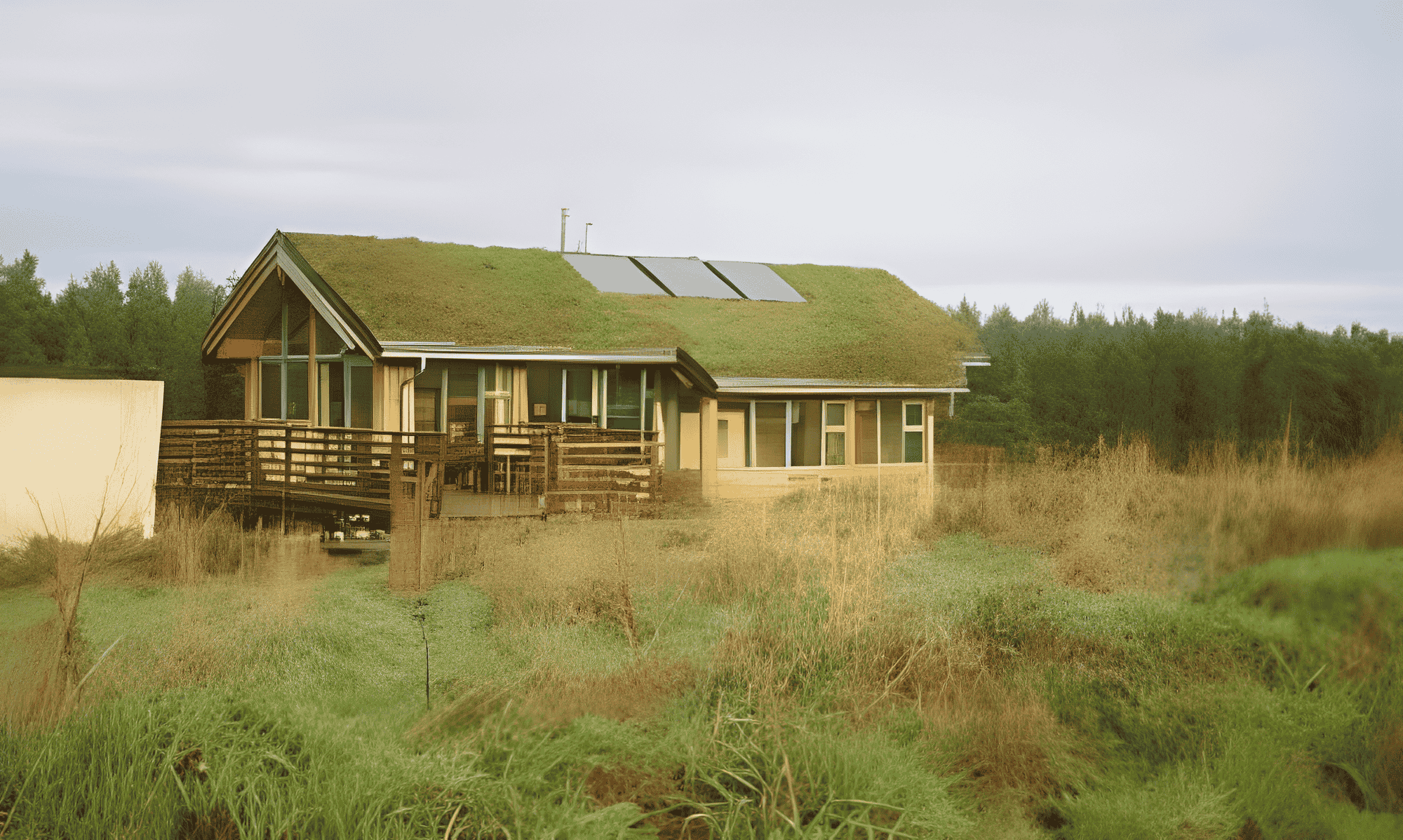
A green roof is one consisting of living vegetation.
Green roofs have been with us for centuries. Even before The Hobbits popularised such dwellings, Scandinavians and the Irish were using turf to line their roofs for both protection against the elements as well as a form of insulation. Not only was it cheap but it was also readily available.
Today, Green roofs are present just about everywhere. We have them on municipal buildings in Durban, Johannesbug and Cape Town, but they are hugely popular overseas especially atop large corporate buildings where the green roof creates a most unique environment.

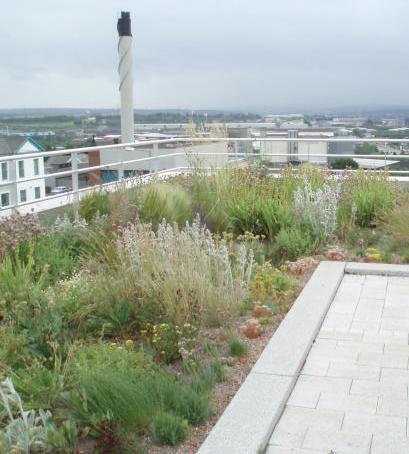
The issue becomes one of why change things? Buildings have existed without them for centuries so what advantages are there to creating a Green Roof?
For a start, all roofs need to be protected against the elements and specifically to prevent the ingress of water and moisture and other harmful effects of nature.
Such waterproofing in itself needs to be protected from UV which affects the thermal expansion and contraction of roofing membranes. By protecting the waterproofing system, by whatever method, we are prolonging its life and saving on unnecessary maintenance costs.
Over the years, Man has expanded his occupation of the environment, and what once was occupied by birds, fauna and animals has now become a concrete jungle. Many of our indigenous flora and fauna are being seriously threatened by a lack of habitat. Green Roofs create little “islands” of vegetation which attract back insects and in turn birdlife.
But, as they say in the ads, that’s not all.
The planting of plants and trees helps to reduce the CO2 in the atmosphere and assists with the filtering of the many chemicals present, from vehicle fumes to exhaust fumes from factories, power stations and other industrial facilities.
It has been scientifically proven that city buildings encourage the build-up of heat – the “Heat island “ effect. Cities can often be as much as 5° C hotter than the surrounding countryside and this in turn has an effect on our climate. Green Roofs help reduce this heat build-up and act as thermal shields – stopping temperature loss from the roofs in winter and keeping them cooler in summer.
In most cases roofs of corporate buildings are simply wasted space – an area where satellite dishes and air-conditioning plants are located.
More and more building owners are recognising the benefits of creating a Green Roof, not just in terms of reducing heating and air-conditioning bills but in utilising the space to benefit their employees – as a recreational area – or as an entertainment area for customers.
Flat dwellers in cities often have nowhere to go to breathe fresh air or take a safe stroll. The roof becomes a meaningful and safe area for them in which to relax, not to mention growing veggies!

Whilst planning requirements in South Africa tend to be some way behind Europe, there is a need to involve town planners in the concept of Green Roofs and to get their buy-in. This is fairly easy in rural environments and more especially some of the environmental eco-estates that are being developed, but does require a degree of acceptance from nearby home owners in an urban area.
What is certain, however, is that a Green Roof is far easier on the eye than one that is painted with Aluminium Paint.
Whilst much heat is lost through building roofs, there is still considerable heat loss from walls. It is, therefore, important that planners understand that providing a Green Roof is not a panacea for all heating and insulation issues. It has to be used in conjunction with other methods of insulation and heat saving. Conventional insulation is normally used as part of a green roof
build-up to provide necessary U value. Green roofs should be considered as an addition to conventional insulation and not as a replacement.
In 1990 Chicago experienced a heat wave that caused hundreds of deaths from the intense temperatures.
In reaction to the unbearable heat that plagued the city, city officials embarked on a citywide cooling strategy that included green roofs.
The idea was simple – plants keep things cool. First, vegetation absorbs heat and moisture keeping the atmosphere cool and comfortable. Plants also give shade which helps prevent solar gain. These two qualities reduce roof temperatures, ambient outdoor temperature and the temperature inside the building.
The roof of Chicago City Hall is now an expanse of green with some 2,000 different species of plants. The project not only helps keep the surrounding air cool, it saves the city thousands of dollars per year in air conditioning costs. The same strategy is finding form in green roofs across the country on hospitals, parking garages, schools and other official buildings.
The energy saving green roof approach deployed in Chicago was based on simulation studies. Studies on the green roofs atop Chicago’s big buildings reveal that those structures can expect a 10% reduction in air-conditioning needs. In other studies, scientists have found that green roofs on smaller buildings can reduce solar heat gain by 95% and reduce cooling needs from 25 – 50%.
Green roofs can be installed on traditional residences providing homeowners with a beautiful way to cut down their heating and cooling costs.
Everyone has their own views on Green Roofs and perhaps the one area that has most concern is the upkeep of the roof once installed.
Quite frankly, if the waterproofing is installed properly along with the drainage system and the correct growing medium and plants the upkeep is minimal. The key is to use indigenous plants that are acclimatised to the local conditions and which do not need any additional watering. Should you install an Intensive Green Roof with trees and other bushes there may well be a need for an irrigation system to supplement local rainfall and these will need the usual attention regarding pruning etc. Indigenous sedum and other ground plants, however, will simply come and go with the seasons.
And the Green Roof will protect the underlying waterproofing. There will be no UV attack and provided that the waterproofing is anti-root protected and there is an adequate run-off to outlets, the waterproofing will not suffer from “ponding” etc.
Many people are worried about what neighbours might say about the appearance of a Green Roof, but experience shows that people become used to them very quickly and are soon won over by the way in which birds and insects are attracted back into the area.
A Green Roof is not a simple thing to install. It requires some forethought.
Most important is an understanding of the local climatic conditions as they will determine the suitability of a Green Roof and more importantly the type of vegetation to plant.
It is pointless planning to plant pine trees and rose bushes on a Green Roof in the Karoo. The plants simply will not survive and the water bill will be horrendous, if water exists in sufficient quantity. Careful thought has to be given to the best match for the local conditions – either grasses or local ground cover in dry areas or perhaps more exotic plants where water is not so scarce. The services of a good horticulturist will also be invaluable as it is not just the plants that are key but also the growing medium. Choosing the wrong soil will be as disastrous as choosing the incorrect plants.
Perhaps one of the more important aspects to consider when installing a Green Roof, especially one which is designed to encourage the use of the roof by occupants, is that of safety. There will be a need for good parapet walls with balustrades to prevent would-be bungey jumpers! This is where liaison with the Department of Labour – Occupational Health & Safety – is vital.
We all know that torch-on membrane alone can add as much as 5.5kg per sq m to a roof. When you add to this the requirements for both drainage and growing medium as well as the saturated weight of the soil during heavy downpours, the demand on the building structure becomes considerable. Construction of the roof has to be able to withstand these increased weights and architects and structural engineers will have to get together to determine the overall requirements.
Clearly there has to be a good fall to outlets to ensure that excess moisture is removed from the soil and the orientation of the roof is critical in ensuring the best presentation of vegetation to the sun.
The choice of vegetation, as you can see from this slide, will play a major part in determining the type and amount of growing medium and in turn the impact on the structure of the building.
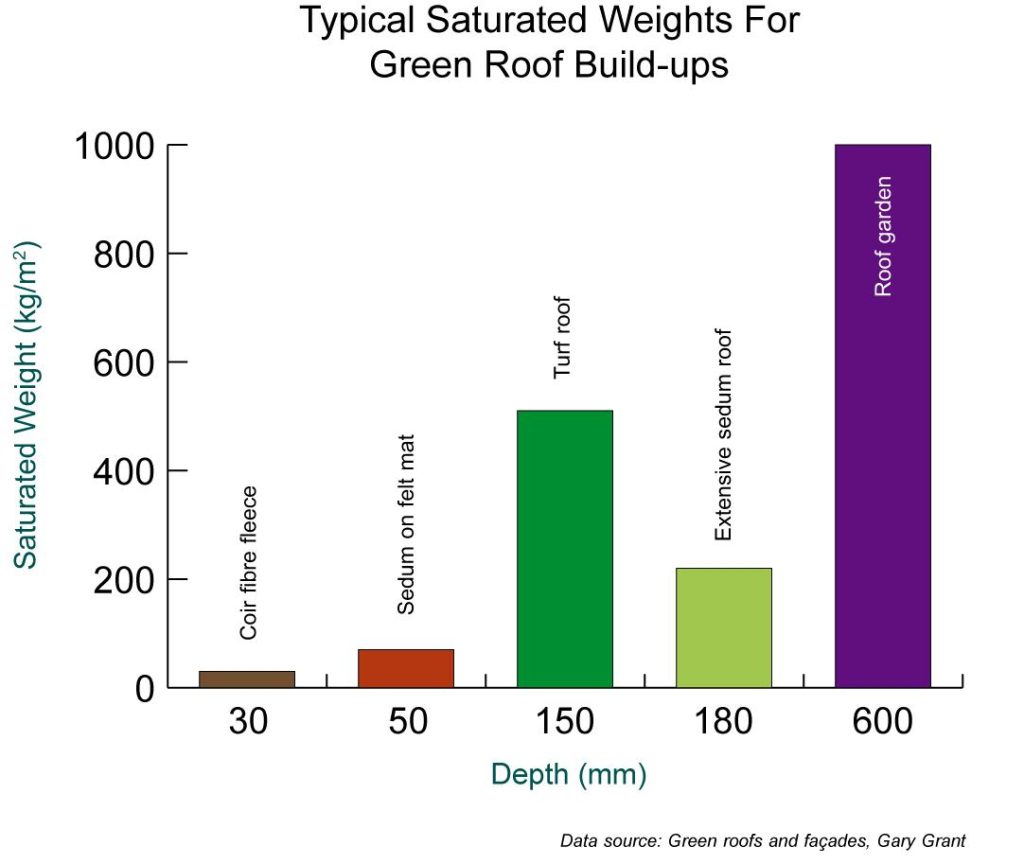
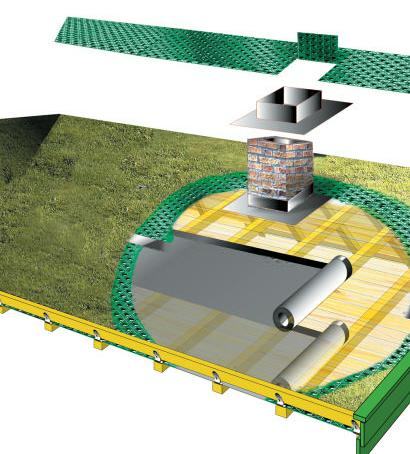
The Scandinavians have long been at the forefront of building Green Roofs and their experience in this field has been crucial to the development of the industry. Their philosophy for the construction of pitched roofs has been utilised the world over and is based on a system of layering – insulation, waterproofing, drainage membrane and growing medium. Almost all their roofs are of the turf kind with some sedum.
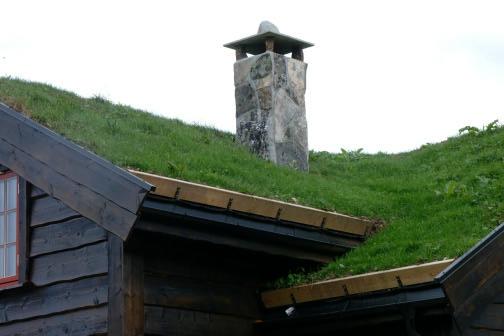
The end result is very pleasing to the eye!
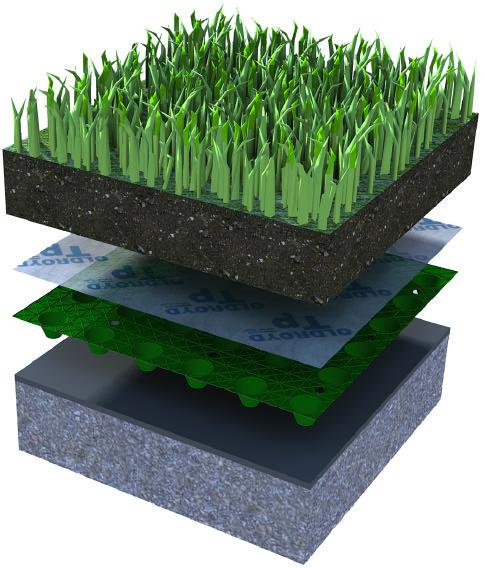
Flat roofs are constructed in much the same manner. The only real difference is the ability of the roof to accommodate more soil for the more extensive roof gardens.
After ensuring that the roof slab is clean and free of any laitance, dirt, grime or grease, the first step in the process is to waterproof the entire area. There are a range of materials available for this purpose, as you can see above, and the final choice will be down to reliability and the “Greenness” of the product. Many architects are now specifying that the product should have as low a carbon footprint as possible.
It need not be added that once the waterproofing has cured a flood test is imperative. It is pointless adding all the remaining layers only to find that there is a leak somewhere.
Ideally your waterproofing product should be root-resistant. Otherwise there will be a need to build in an additional layer of a root barrier.
The next layer is that of drainage.
A key aspect of any Green Roof is the ability to retain moisture, especially during the drier months.
Drainage can either be achieved by the use of free-drainage aggregate, which will clearly add additional weight to the overall structure, or by the use of dimpled membrane. These dimples retain moisture for use by plants as the surrounding soil dries out – thus sustaining the plants for a longer period once the rains have stopped.
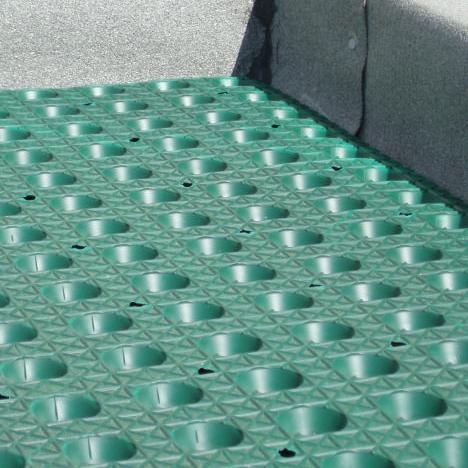
Immediately above the drainage membrane a filter fleece is applied. This is simply a polypropylene membrane – bidum – and is there to stop the dimples in the membrane from clogging up with soil. It also filters out all but the finest of materials to prevent drains etc from becoming blocked.
The growing medium is the next layer to be applied, and it is here where the expertise of a local horticulturist is vital to determine what type of soil is best suited to the plants selected.
The term Bio-diverse roofs applies mainly to man-made materials which absorb UV and water thus preventing excessive run-off. This water is held in the soil while pollutants are removed and the water evaporates back into the atmosphere.
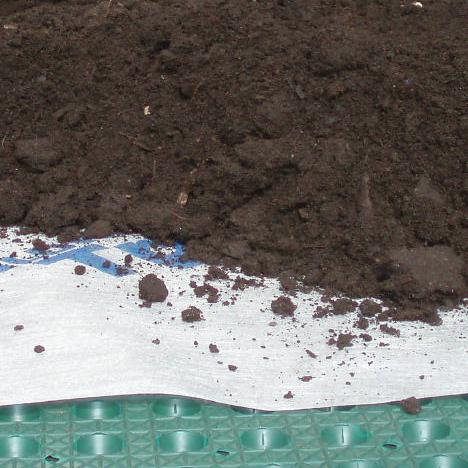
The choice of vegetation is yours. The deciding factor at the end of the day will be the ability of the plants to either survive from natural rainwater or from irrigation.
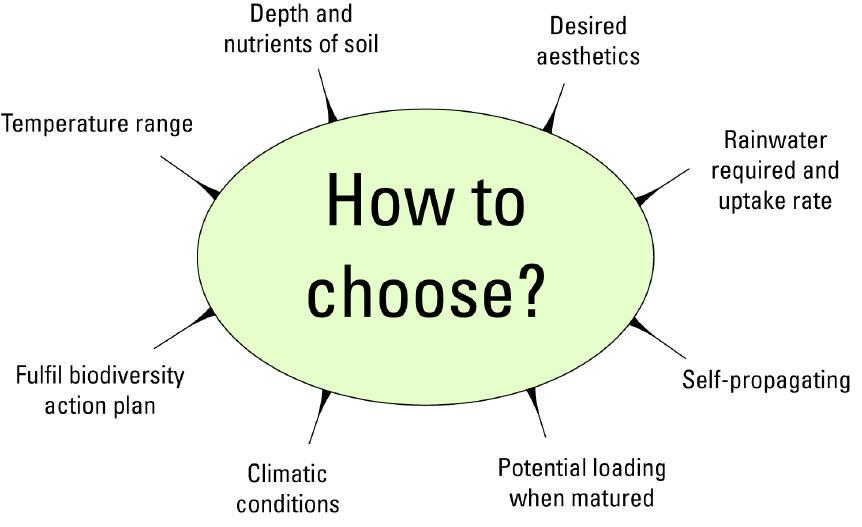
In persuading property owners to go Green, several issues become relevant:
And a whole host of other issues.
Perhaps one of the most important aspects for consideration is that of the impact of a Green Roof on running costs.

Once installed, your Green Roof requires care and attention just like any other asset. It is not something that can be put in place and then ignored.
Outlets need to be kept free of debris, waterproofing needs to be inspected to ensure integrity, parapet walls and balustrades have to be intact to prevent accidents.
And if you want your Green Roof to be a thing of beauty and a haven for wildlife, the plants need to be looked after and nourished where necessary.

Contact Us 011 7083603
Email techncal@safeguardchem.co.za